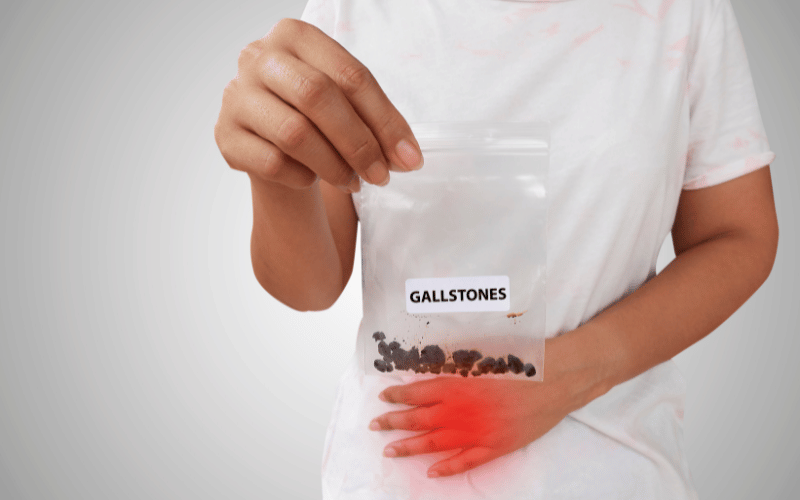Introduction: Navigating Through the Realm of Gallstones
Gallstones are hard particles that form in the gallbladder, a pear-shaped organ nestled beneath the liver. These stones can vary significantly in size and number, presenting a range of symptoms and potential complications. By delving into the specifics of gallstones, we can better understand their nature, predisposing factors, and the signs that one should be vigilant for.

The gallbladder’s primary function is to store bile, a digestive fluid produced by the liver. Gallstones form when there’s an imbalance in the components that make up bile, leading to the crystallization of these substances. The role of bile is crucial in digesting fats, and any disruption to this process can lead to uncomfortable and sometimes severe symptoms.
Recognizing the signs of gallstones is vital, as they can be indicative of underlying complications. However, it’s worth noting that gallstones can be present without manifesting any noticeable symptoms, particularly if they are small in size. This condition, known as silent gallstones, may not require immediate treatment but necessitates monitoring.
With an increased awareness of the contributing factors to gallstones, preventative measures can be put in place. Certain demographics, including women, older adults, and individuals with a family history of gallstones, are at a heightened risk. Furthermore, lifestyle factors such as obesity, rapid weight loss, and specific dietary patterns can also play a significant role.
By addressing these risk factors and adopting a healthier lifestyle, one can significantly reduce the likelihood of developing gallstones. This guide will navigate through the intricacies of gallstones, offering insights and valuable information to empower individuals to make informed decisions regarding their health.
Fact 1: What are Gallstones Made Of?

Gallstones, or cholelithiasis, are solid particles that develop in the gallbladder, and their composition can be quite varied. The most common type of gallstones is cholesterol stones, which, as the name suggests, are primarily made up of cholesterol. These stones form when there’s an excess of cholesterol in the bile, a digestive fluid produced by the liver. The other primary type of gallstone is bilirubin stones, which are comprised of bilirubin, a substance found in bile that results from the breakdown of red blood cells.
Now, it’s crucial to understand that bile is made up of water, cholesterol, fats, bile salts, proteins, and bilirubin. Under normal circumstances, the various components maintain a delicate balance. However, when this balance is disrupted, gallstones can form. For instance, if the liver excretes more cholesterol into the bile than it can dissolve, excess cholesterol may crystallize and form stones.
Aside from cholesterol and bilirubin stones, there are also pigment stones, which are smaller and darker, made up primarily of bilirubin and calcium salts that are found in bile. These stones are less common but can be more problematic as they tend to form in the bile ducts rather than the gallbladder.
Understanding the composition of gallstones is crucial because it directly influences the chosen treatment approach. For example, cholesterol stones are often treatable with medications that can dissolve them, whereas bilirubin stones might require different management strategies.
So, delving deep into the understanding of what gallstones are made of opens up avenues for tailored treatments, ensuring that individuals affected by this condition can navigate their health journey with precise and effective interventions. (1)